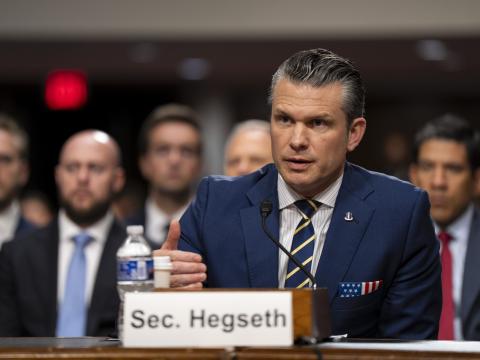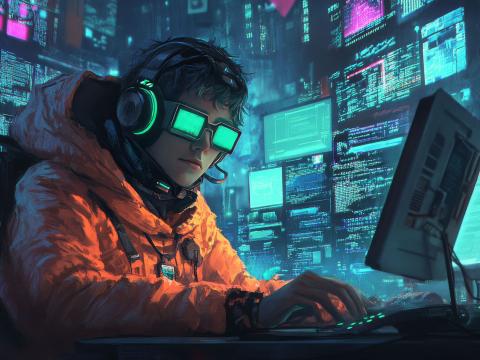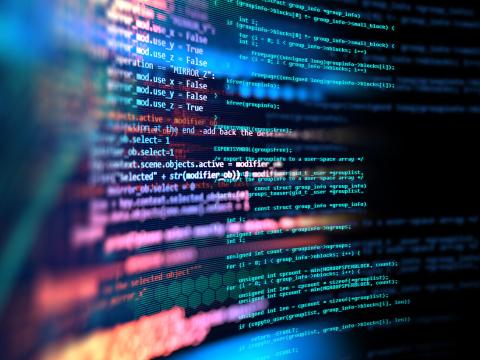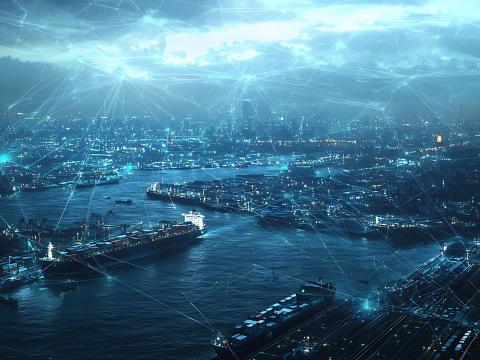Twitter Is Mission Critical
The explosion of online social media is profoundly changing how people produce, consume and share information. Social media rapidly turns monologues into dialogues and broadcasts into conversations. The result is a rich environment in which ideas are shared, questions are answered and collaborative relationships flourish.
But here is the problem: The U.S. Defense Department currently denies access to social media sites from many unclassified department networks. This misguided decision isolates the defense work force from one of the biggest engines of social, economic and technological change in the world today. This policy must change.
This is a critical issue, particularly for military technologists who envision, develop, produce and evaluate new technologies. Blocking access to social media restricts the warfighters’ ability to collaborate and innovate. It limits their ability to take their mission—defense of this nation—to new and better levels.
Social media allows people to share their insights, experiences and questions with a diverse community, regardless of distance in time or space, and regardless of organizational boundaries. Social media communities are self-selected and interest-driven. They are not limited to those who wear the same uniform, work on the same projects or have the same background and training. Social media extends beyond the military-industrial complex.
Three primary excuses are given for blocking social media: to maintain information assurance and security, to regulate bandwidth and to govern employee time. None are good reasons for blocking social media, particularly at stateside bases.
The network security argument is weak, largely because the blocked sites do not represent a unique threat. LinkedIn, which typically is not blocked, presents just as much of a threat as Facebook. The two networking Web sites have similar capabilities. More to the point, blocking social media in an attempt to prevent exploitation of network vulnerabilities is a self-induced denial-of-service attack. Network security, by definition, involves ensuring the network can operate without being penetrated by hostile parties. Preventing intrusion by blocking legitimate users misses the point, and a system that is more secure than it is useful is useless.
The bandwidth argument makes sense for some video-sharing sites such as YouTube, but Twitter is hardly a bandwidth hog. And really, is bandwidth such a rare and precious commodity? If so, the department should consider mandating smaller PowerPoint files.
The worst reason to block social media sites is the “We don’t want people to waste time” excuse. People wasting time during the day is a leadership issue, and it requires a leadership solution. Blocking “extracurricular” Web sites is not leadership. Good leaders are in touch with their people, and they should know if someone is not completing the mission.
There are information assurance risks associated with permitting defense networks to access social media, and many sites use large amounts of bandwidth; however, the department risks locking itself into legacy processes right at the start of the social media revolution. Indeed, the risks inherent in using social media sites are more tolerable than the mission impact of not using them.
The Defense Department can help ensure network security and prevent social engineering attacks by implementing wise policies, written by people who understand the value of social media. It can offer brief, clear usage principles, and then it can trust the work force to do the right thing. Make no mistake—a zero-usage policy is not wise and does not support the mission. The department must find ways to work with social media. It cannot afford to just block it.
Over the past 30 years, the Defense Department has embraced new technologies such as computers, the Internet, cell phones, BlackBerrys, videoconferencing and more. The department’s processes have changed with each new invention—despite the risks in embracing such technology. No one suggests the department should not have brought computers into the work force because computers increase the risk of massive data compromise—although they do. That would have been a silly policy. The decision to disallow the use of social media because it is too risky is just as silly. Yes there are risks, but the risk of not using these tools is even greater.
It is time for the Defense Department to embrace the next evolution of technology: social media. The time has come for the department to acknowledge the change that is transforming the world. Social media is sparking a revolution among those industries and enterprises with the vision and courage to embrace it. That is not hyperbole—it is an understatement.
It is time for the department to recognize that social media enables workers to find, connect to and collaborate with relevantly skilled experts from around the world. It increases their situational awareness of a wildly dynamic technology environment, and exposes them to ideas, people and communities that can play a huge role in supporting their job and their mission.
It cannot be ignored and should not be blocked.
Maj. Daniel Ward, USAF, is the chief of process improvement and reengineering in the Acquisition Chief Process Office, Office of the Deputy Assistant Secretary of the Air Force for Acquisition Integration.
Maj. Gabe Mounce, USAF, holds an advanced degree in electrical engineering from the Air Force Institute of Technology.
Carol Scheina is the managing editor for Defense AT&L Magazine at the Defense Acquisition University.
Read the expanded version of this article in the October 2009 issue of SIGNAL Magazine, in the mail to AFCEA members and subscribers October 1, 2009. For information about purchasing this issue, joining AFCEA or subscribing to SIGNAL, contact AFCEA Member Services.




Comment
Great article. The one thing
Excellent article and
For the American readers--I
Many social technology
The three amigos who's
As a Guardsman, this issue is
Secure social computing is
Adm Zelibor - Great comment!
Dr. S - Wow, thanks for
The information assurance
Thanks much for the great
Bob, thank you for your point
To the WanderingWarrior. If
I am curious to hear what
It has been suggested on
It has been suggested that
When soldiers uses Facebook,
Comments